A Guide for Investing in Traditional Islamic Art

In recent years, with the rise of TikTok and Instagram, there has been an explosion of interest in Islamic artwork. A lot of new artists have popped up, which is wonderful, but it’s abundantly clear that, rather than competence and pedigree, social media rewards viral artists, copycats, and now AI generated art. Those traditional artisans who have worked for years to attain their ijaza and become literal masters at their craft are barely scraping by. It’s tragic.
For this purpose, we decided to write a short guide on what to look out for when investing in a piece of ‘original’ traditional Islamic art. (We have sold original art in the past, but at this time, we are only selling prints, so this guide is just for your reference.)
If you’re purchasing Islamic art, and want to support traditional Islamic art forms, here’s a few pieces of advice:
1. Ask the artist if they have their ijaza or are working towards it.
All traditional Islamic arts from calligraphy and illumination to Qur’anic recitation were passed down from master to student, creating a chain (or silsila) of knowledge. The art forms have mathematical aspects and very specific rules, and it’s very easy for a master to determine an artist who is self-taught versus one who has studied traditionally. Once a master determined that a student had mastered a subject according to the line of masters of which he or she is an inheritor, that student earns their ijaza in that specific artform. In most subjects, it takes years to reach the point of ijaza. After receiving ijaza, the new master can now train new students.It’s definitely possible to purchase from students who are still working towards their ijaza, though it’s much more possible that the work may have small mistakes. But such work will be much more affordable, and you’ll be supporting budding calligraphers as well.
2 . Ask if their calligraphy is their own original composition, or if they’re using stock graphics from websites like Shutterstock or Google Images
Sadly, a majority of the Islamic art on social media utilizes repurposed stock graphics, where the artist has downloaded and retraced other Arabic calligraphy and illumination. You should take this into account as it affects the value of the art you are purchasing, and could mean the artwork you’re purchasing is a copy/paste job. Additionally, you should ensure that the artist can read and know the meaning of the calligraphy they’re selling. This is not a joke: we’ve found in our field of nikahnamas, so many nikah contracts are being sold with stock calligraphy, and the calligraphy is mistranslated because the vendor cannot read the calligraphy, and instead trusted Shutterstock’s translation. That’s the absolute state most are operating in. It’s on industry professionals and connoisseurs to demand better.
3. If the art is original, ask if it’s made using natural materials
In traditional Islamic art, materials used are incredibly important. Calligraphers are taught to cut their own pens, and prepare their own paper and paints. Better materials made for more precise, longer lasting art pieces. A lot of art being sold today is using cheaper acrylics and papers, which do affect value. Also, wouldn’t you want Allah’s name to be written in gold and indigo, not plastic on plastic? : )
Read this beautiful description of how the renowned Arabic calligrapher Mohamed Zakariya produces his materials:
“Like all Islamic calligraphers, I use a number of specialized materials and techniques. Almost all of my works are written on paper that I first dyed and coated with starch and subsequently varnished with several coats of ahar, a liquid composed of egg whites mixed with alum. The coated papers are highly burnished, using an agate burnishing stone, and then aged for at least a year. I make the black ink from soot produced by burning linseed oil and kerosene.”
4. What if the art depicts animals or the human body?
There is a lot of new Islamic art with imagery of humans, and while they sometimes have powerful messages, one has to consider how appropriate it is to invest in such an art piece and display it in their home. While a lot of these art pieces have messages that are Islamic in nature, their style is often much more similar to traditional Christian art than Islamic art. There is a reason why the Vatican is filled with paintings of humans, while our masajid are instead decorated with beautiful calligraphy and illumination. There is beauty and honor and spiritual illumination to be found in maintaining that which makes Islam and Muslims unique.
With a few exceptions, all schools of Islamic thought prohibit the drawing of living beings, except for educational purposes. The few exceptions allow them, but with the caveat that they should not be displayed in places of reverence (for example, being displayed on your wall). There are examples of Mughal miniatures with human faces depicted, but it’s important to note that these were most often made for books, and not meant to be displayed on walls.
5. Bigger isn't always better
Some of the finest pieces of traditional Islamic art can fit in the palm of your hand. The most skilled artists were able to produce the most intricate pieces. In the age of Instagram, large sprawling canvas paintings are rewarded, but traditional art played by different rules. When purchasing, don't assume that the larger the piece, the higher the price. Take this small Qur'an from Kashmir embellished with Lapis as an example, each page is only 4" x 6":

Please give us your feedback on this article, as we are always looking to improve it. In conclusion, if you are going to spend a large sum, it’s a better investment not to spend on something that went viral and is flashy, but instead something timeless by a trained artist that can hold value over generations.



